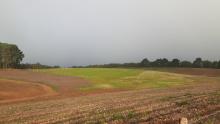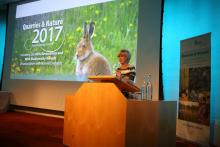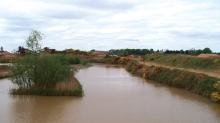The company’s ecology and landscape designs team has been commissioned to help implement the scheme at Bardon Aggregate’s 160hectare quarry near Coalville. The extension will involve the removal of up to 20 million m³ of overburden and, due to the sensitive location of the project site, the landscape design is forming a key component of the development approach.
SLR’s scheme involves the creation of a new hill to the north of the future working area, which will accommodate all of the initial overburden and help to screen the new quarry. Mirroring the landscape in the surrounding Charnwood Forest, the new hill will exceed 240m above ordnance datum (AOD) and cover 90hectares. With the upper slopes restored to heathland and the lower slopes used for agriculture, the new landscape will be comparable with other local high spots in the National Forest.
SLR is now moving ahead with the detailed design, which will involve the translocation of species rich hedgerows, lichen covered rocks and lowland wet grassland as well as the creation of critical habitats for protected species such as amphibians, badgers and bats and the creation of a Biodiversity Action Plan for the whole estate.
“This project is a great example of how sensitive landscape design can help to overcome local concerns while also providing biodiversity enhancements,” said SLR Principal Sarah Planton.
“Our scheme provides a complimentary balance between the impact of quarrying on the landscape and allaying the concerns of local people.”
The whole estate includes nationally protected woodland and extensive agricultural land as well as the existing Bardon Hill Quarry. It is also of significant conservation interest with areas designated as geological and biological Sites of Special Scientific Interest (SSSI).
Working closely with the in-house team at operators Bardon Aggregates, part of
A two-year public consultation programme allowed the teams to identify and address the community’s concerns. The design process is expected to take up to three years ahead of new excavation, and the implementation will be phased over the following decade.
The news that further quarrying will be allowed over the next 40 years means that the 150-year history of the site will continue as well as securing over 140 direct jobs at the site and a further 150 jobs whose livelihoods are dependent on quarrying operations continuing.










